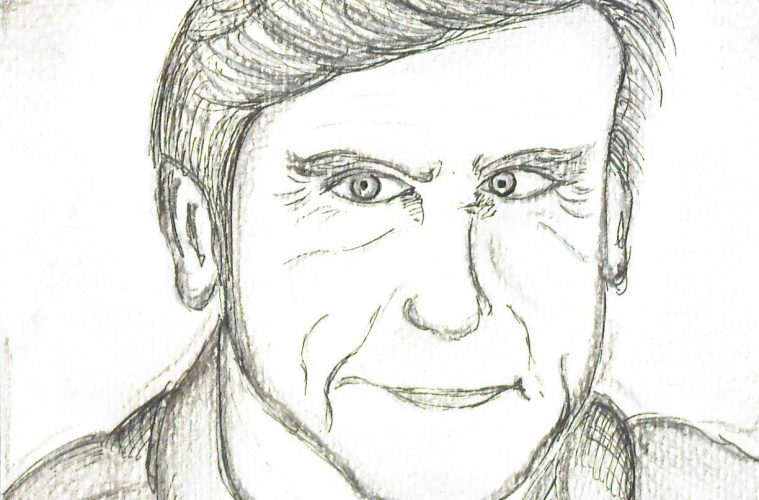This article elaborates the concept of Nonviolent Communication (NVC) according to Marshall Rosenberg. NVC is a linguistic method of conflict transformation that helps communicating in a more compassionate and authentic way in four steps: observing a situation, expressing the feelings that are triggered by it, identifying the underlying needs and finally formulating a wish or request.
Marshall Rosenberg (1934-2015) was a clinical psychologist seeking a tool to improve communication and create a more peaceful dialogue between conflicting parties during the 1960s Civil Rights Movement in the United States of America (USA). At that time, he mediated conversations between rioting students and school administrators regarding the topic of desegregating public schools to make them accessible to every American citizen irrespective of skin-color. These events led to the foundation of the Center for Nonviolent Communication in New Mexico and a spread of Rosenberg’s communication techniques, which proved to be very effective in conflict transformation.
Communicating without Judgment
NVC is based on the assumption that “it is our nature to enjoy giving and receiving in a compassionate manner” and to interact empathetically. It is an approach that focuses on individual human needs and how leaving them unfulfilled can trigger conflicts within ourselves and between ourselves and others. Its aim is to respond to the underlying needs that result in violent verbal communication or violent actions and to enhance authentic speaking and empathic listening.
We can then respond to particular needs in an empathic manner so that emotions that may lead towards destructive behavior, such as anger and frustration, are transformed.
The core component of NVC is empathy. In his book Nonviolent Communication: A Language of Life, Rosenberg states that “staying with empathy, we allow speakers to touch deeper levels of themselves”. This means listening to people’s’ feelings and needs without judgment to see behind the words they express. Everyone has certain needs and listening with empathy can have surprisingly positive effects, such as preventing or stopping cycles of violence, because it allows us to see others not as “monster[s]”, but as human-beings of equal worth who deserve to be treated with dignity. We can then respond to particular needs in an empathic manner so that emotions that may lead towards destructive behavior, such as anger and frustration, are transformed.
However, Rosenberg emphasizes that “we need empathy to give empathy”. If we lack empathy from others, we might not be able to fully see and receive our fellow humans’ expression empathetically. He proposes that we should not depend solely on the other, but activate our own resources: stop for a while, take a deeper look inside and provide ourselves with the empathy we need. We can then take a time-out to calm down our emotions and gain a more distant, more reflected view on the situation and get back to being able to show empathy again. Rosenberg suggests four steps that guide through such practice.
Steps of Nonviolent Communication
NVC is a process that involves four steps: observations, feelings, needs, and a following request.
Here is the situation: Two friends, Sarah and Amber, meet for lunch. Whereas Amber is eager to have a conversation about the new topic she is dealing with in her studies, Sarah is constantly looking at her phone. At one point, Amber rips the phone off Sarah’s hand and puts it aside, saying loudly in an annoyed tone: “How can you be so addicted to your phone?”
This question represents a judgment of Sarah’s behaviour instead of the expression of her own unmet need, which is having the attention and feeling the presence of her friend during their lunch. If Sarah took it personally by listening with so called ‘wolf-ears’, the reply to Amber’s question would be: “I am not addicted to my phone!” This way, the direction of the conversation turns into a discussion about phone addiction and blaming the other person, missing the actual underlying reasons for Amber’s reaction.
Instead of going down the road of judgment, Sarah’s empathic reaction according to the four steps of NVC would take place as follows: First, Sarah observes that her friend responds in a rough way to the fact that she was sending messages on her phone. Second, she identifies this reaction as a feeling of anger. Third, she realizes that this anger is triggered by an unmet need: They met up to have lunch together and instead of focusing on the lunch and listening to her friend, she was focused on her text messages. While being receptive towards the feelings and needs behind the reaction, by listening with so-called ‘giraffe-ears’, she gives the following response: “I am sorry I looked at my phone so much, I didn’t mean to disappoint you and give you the impression that I am not willing to listen to you”. In the fourth place, a request can follow: “Is it okay if I finish the last message and then I will be fully yours for the rest of the lunch?“ Rosenberg calls this way of communicating ‘Giraffe-language’, because of all land animals the giraffe has the biggest heart, which is the faculty we need for empathic engagement with each other.
Conclusion
To sum it up, NVC aims to encourage us to be connected to our own needs and thereby leads to more honest expression in order to consciously communicate what we feel and need in a situation. Moreover, it encourages us to empathetically listen to the needs of others to understand their behaviour in a different way, not as a personal offense but an expression of their own needs. Therefore, NVC has the potential to transform the violent use of language and to enhance a more peaceful, understanding and respectful human interaction.

